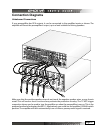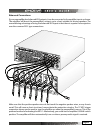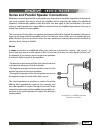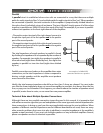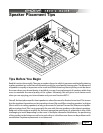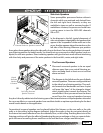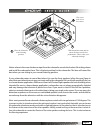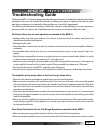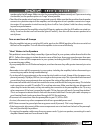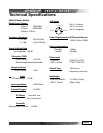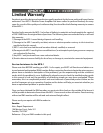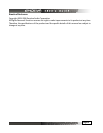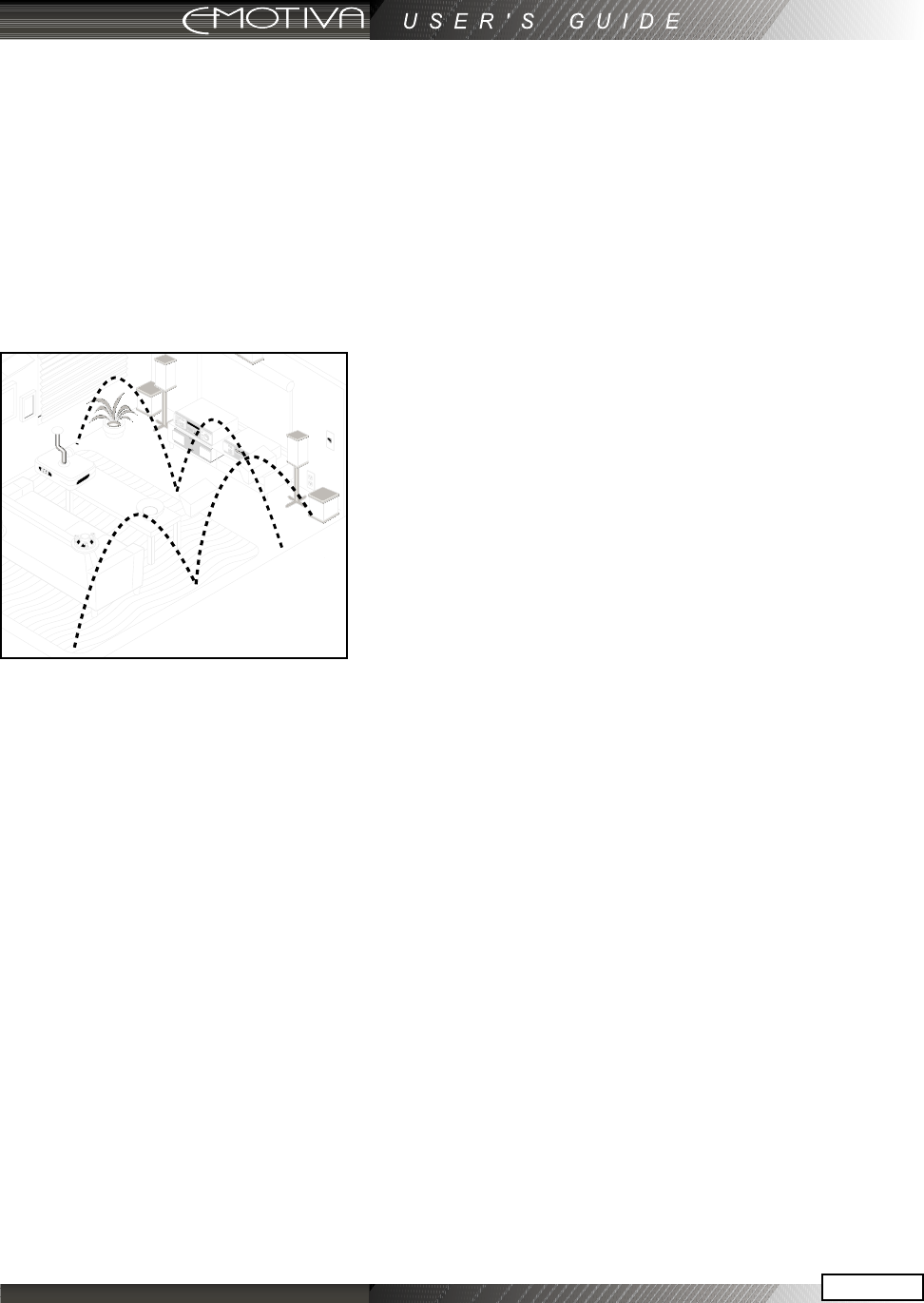
Page 28
Page 29
Surround Back Speakers
Many preamplier processors feature additional outputs for surround back speakers. These create a
wonderful sense of realism in surround eects during playback of Dolby Digital EX, Dolby Pro Logic
IIx, and DTS ES.
Ideally, all the surround speakers should be of the same make and model as the surround speakers,
and tted at similar heights to produce a smooth continuous sound eld.
Subwoofer Location
Although subwoofers are normally congured with their
own internal power amplier (rather than using the MPS-
1), we know you will probably use at least one subwoofer
in your home entertainment system. As such, it’s important
to understand correct subwoofer placement so that you get
the most out of the other speakers connected to the MPS-1
Modular Power Amplier.
A subwoofer typically sounds best in a corner with at least
5 feet of wall to either side. Due to the short wavelengths
of high-frequency sounds, they don’t interact strongly with
the size and shape of a room. Lower frequencies long wave-
lengths that can cause “Standing wave” problems. Placing
the subwoofer in a corner usually creates the best possible
situation for the sound to interact with the room, allowing
even distribution of the bass frequencies. Often the corner that oers nearby placement to the
front speakers may yield the best results, but you should try several locations before settling on
just one.
The best location for a single subwoofer can be found by playing a couple of dierent low frequency
test tones (or some music with heavy sustained bass passages) and proceeding with the following
easy 1-2-3 process:
1. Place the subwoofer right on the seat of your couch or listening chair.
2. You can then either run the calibration (noise) signal through it, or simply plug the analog outputs of a
CD player directly into your subwoofer’s low-level inputs. Turn down the subwoofer’s volume level before
turning on the CD, then play the test tones or some music with heavy sustained bass passages.
3. Walk around the room, standing in all the positions where you might be able to place the subwoofer.
Again, this is usually near the corners of the room. Try locations fairly close to the front speakers.
Standing waves depicted in a room.
“Peaks” are good, “Dips” are bad.



